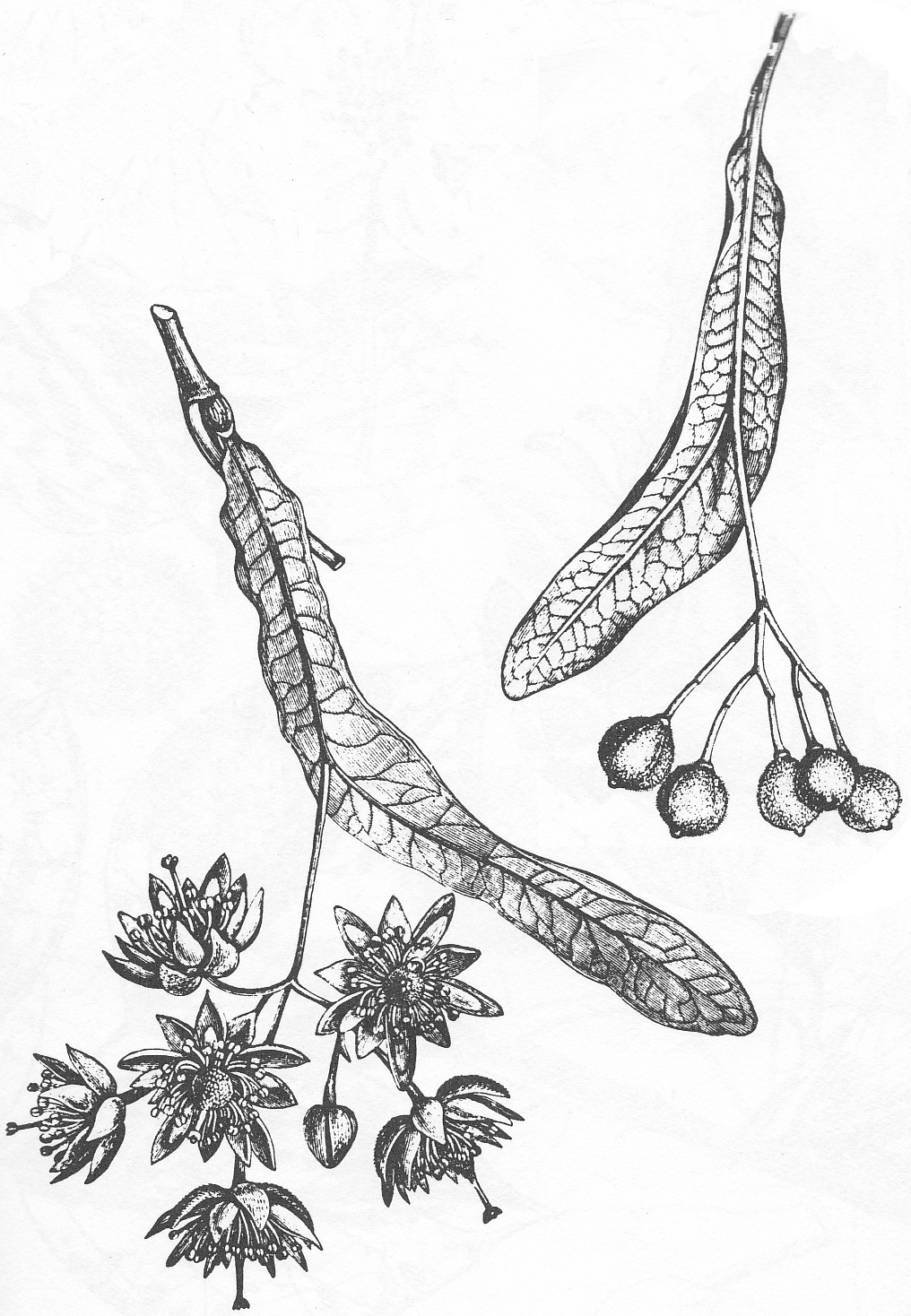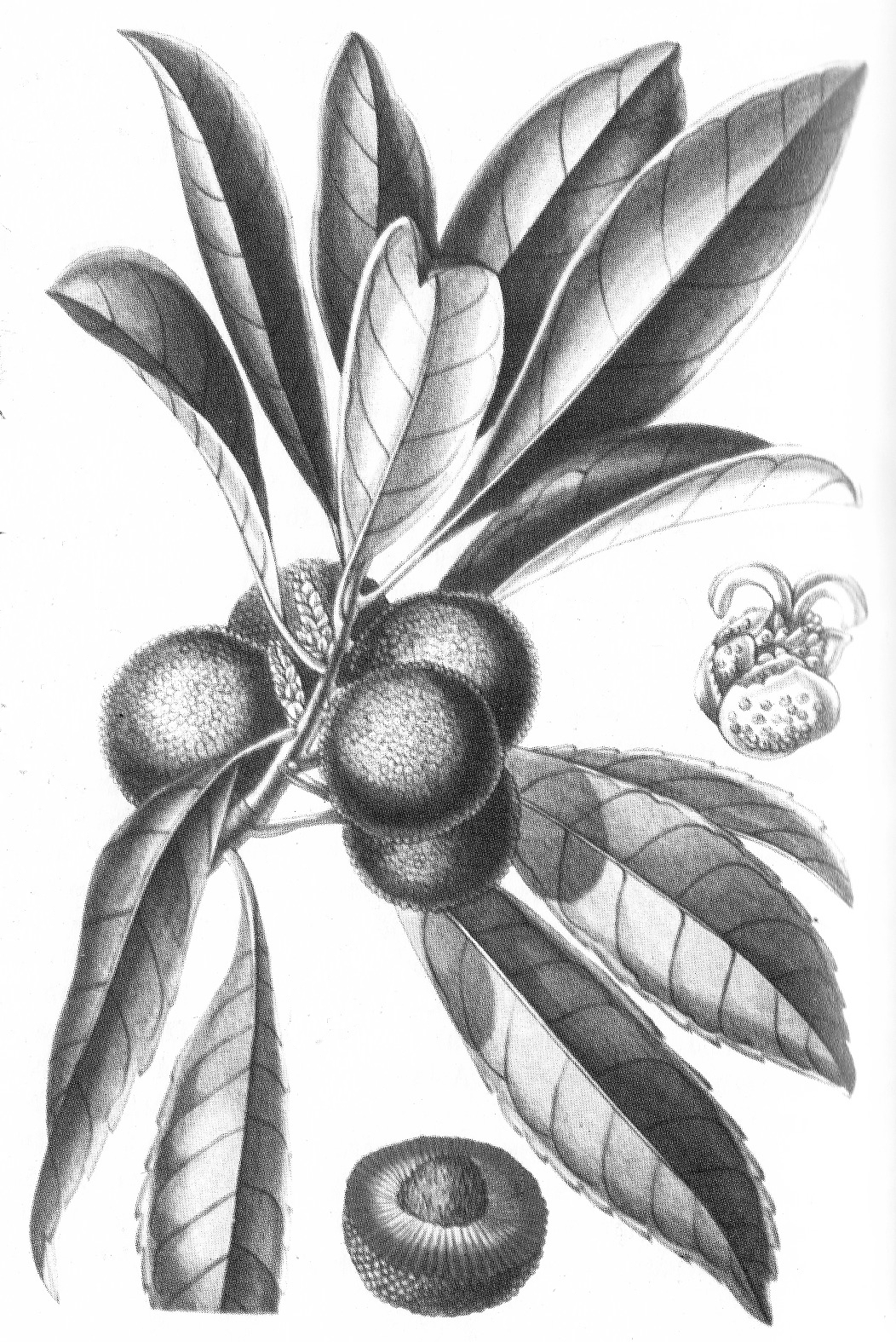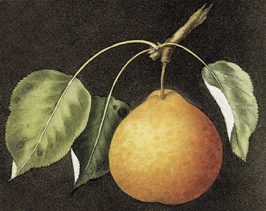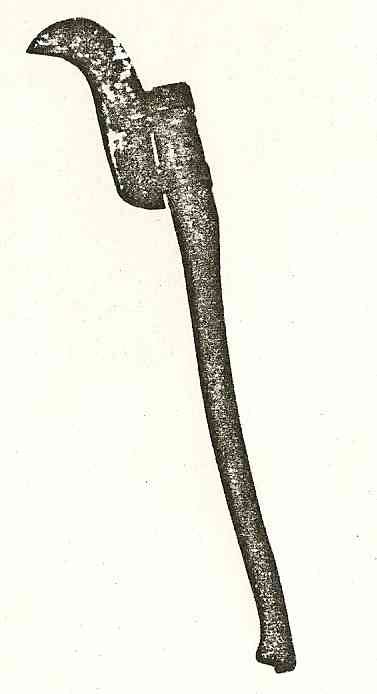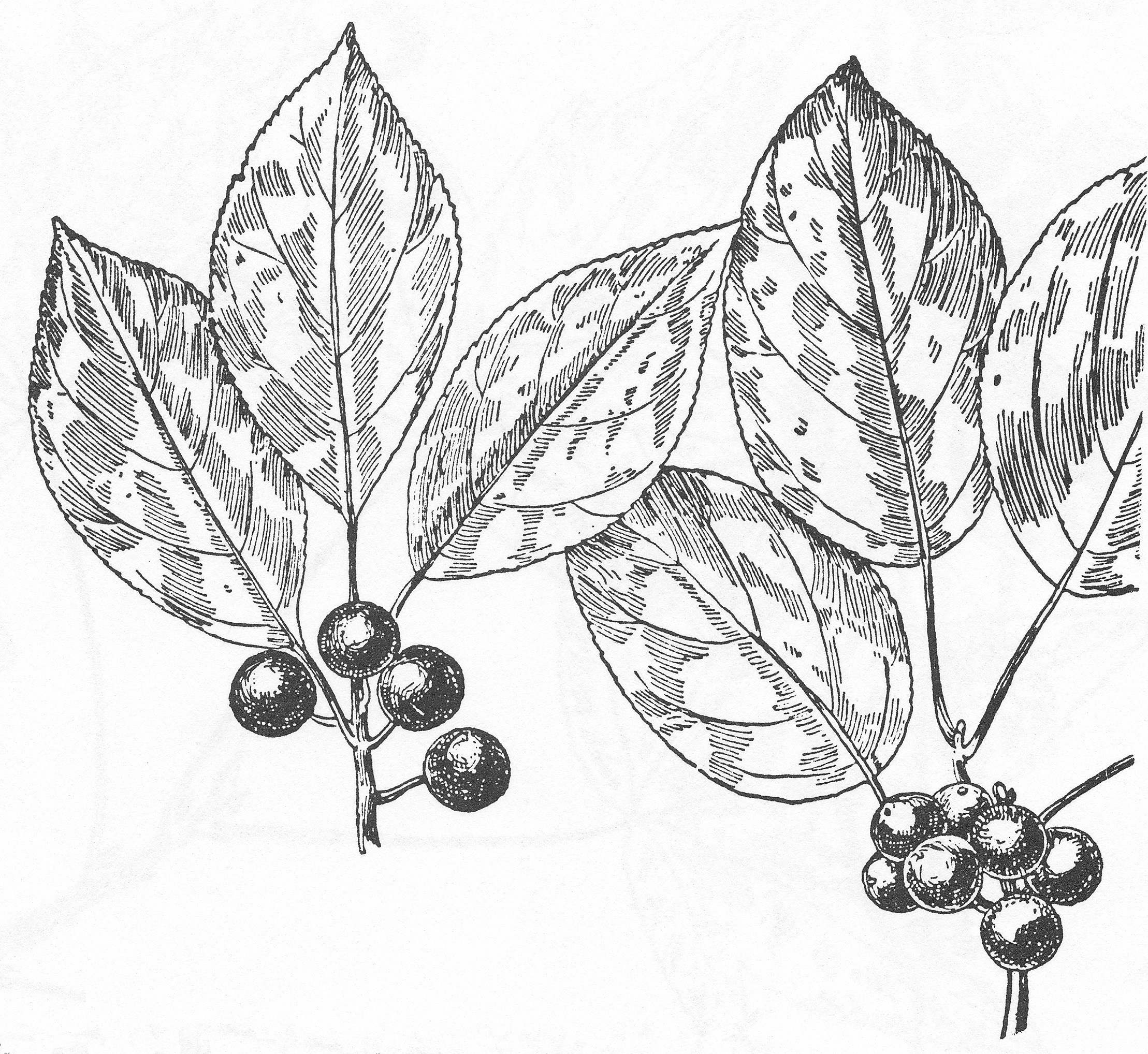bac·cha·re (bak´ä´re) n. obs. foxglove; lady’s glove. [? < L imp. bacchare roam in a wild manner]
back·wort (bak´wôrt) n. comfrey. [perhaps indicative of its use as an herbal treatment for joint and muscle pain]
bac·te·ri·oid (bak tēr´ē oid) n. adj. —n. a microorganism of bacterial character which is found in the root nodules of leguminous plants. —adj. of the nature of, or allied to, the bacteria. [< NL bacterium + -oides, a contraction of Gk. -eidos -εἶδος like, likeness of form]
ba·cu·ry (bak´yə rē) n. -ries. a tree of humid tropical South American forests (Platonia insignis Mart., of the Clusiaceae), whose pleasantly-coloured hardwood is much admired for fine woodwork, and whose edible fruits yield a pleasant odour and oil of use as an emollient. It is pollinated by a species of parrot.
bad·der·locks (bad´ėr loks´) n. an edible kelp of rocky and wavy marine shores in extreme northern Europe (Alaria esculenta (L.) Grev., of the Phaeophycophyta); Balderlocks. It is comprised of a holdfast with an oblong undulate frond and midrib up to 2m long, with numerous shorter basal sporophylls upon its distinctive stipe. [? < ON Baldr a much-admired deity of the Scandinavian mythology, representing lordship, purity, and light + OE locc lock of hair]
bad·land (bad´land) n. a xeric terrain, often desert-like even though not truly lacking rainfall, in which vegetation is extremely limited. Frequently, rock outcroppings are prominent in such terrains. —adj. with reference to an organism, or other object, occurring in such a terrain. [< F mauvaise terre]
bads (badz) n.pl. West country. husks of walnuts.
Balder bræ n. an herb native to scattered locations on clay in arable land and wasteland in Europe (Anthemis cotula L., of the Asteraceae), bearing daisy-like inflorescences, bipinnate leaves with narrow pinnæ, and an unpleasant odour; stinking chamomile. [< ON Baldrs-brá Baldur’s brow]
Bal·der·locks (bäl´dėr loks´) n. badderlocks.
bal·der·moyne (bäl´dėr moin) n. gentian.
bar·bel·lule (bär bel´ūl) n. a very small barbel. [< F < NL barbellula, dim. of barba beard]
bare-root adj. 1 of plants packaged for shipping or sale, without soil provided around the roots. 2 of plants in certain habitats (usually upon exposed rock), without soil to cover and protect their roots.
bark·cloth (bärk´kloth´) n. 1 textile for clothing, made from the inner bark of such species as Broussonetia papyrifera (L.) Vent., native to Indomalaysia, or Ficus natalensis Hochst., native to Zimbabwe (both of the Moraceae), as well as other species of the Moraceae bearing similar bark. 2 a felt cloth prepared from the bark of Thuja plicata Lamb. (of the Cupressaceae), native to western North America, and useful for clothing. 3 a cotton-blend cloth also used for clothing as well as drapery, exhibiting a relatively rough texture somewhat suggestive of bark.
ba·si·fixed (bā´si fikst´ or bā´zi fikst´) adj. 1 attached at or near the base. 2 attached by its base. 3 of an anther, attached at its base to the connective. [< Gk. basis βάσις base + ME fixed]
basil thyme n. any herb of the Eurasian genus Acinos Rupp. (of the Lamiaceae), creeping and ascending annuals with opposite ovate and glabrate leaves, hirsute stems.
bass·wood (bas´wu̇d) n. 1 a North American species of linden (Tilia americana L., of the Tiliaceae), or any of its varieties and forms; wicopy. It bears its fruit as drupes upon pedicels based upon a linear bract. The tree forms an ovate crown of large ovate leaves, and is often planted along streets. 2 the tasteless wood of this tree, used for a variety of woodwork projects. [< E bast + wood]
batesian mimicry n. in botany, a mimicry where one (or more) species of plant(s) which is/are of relatively low abundance (the mimic(s)) achieves success by attracting the same pollinators used by a similar more abundant species (the model) by displaying similar signals (generally flower appearance). [< Henry Walter Bates (1825-92), English explorer-naturalist, who proposed the concept]
baulk (bok or bolk) n. 1 a roughly-squared beam of heavy timber, often used as a cross-beam of a house. 2 a ridge left between furrows while ploughing. —v.t. plough in such a way as to leave a baulk. [ON bálkr beam, OE balca ridge, the two terms only partially discernible]
bau·plan (bau´plan) n. bau·plä·ne. in palæobotany, a generalized representation of the diagnostic features of a supposed archetype for a taxon. [< G bauplan building plan, blueprint]
bay (bei) n. 1 a large shrub or modest tree (Pimenta racemosa (Mill.) J.W.Moore, of the Myrtaceae), native to the Caribbean. Its aromatic leaves are often used for flavouring food, although its use to add scent to rum makes the rum usable only as a cologne. 2 a shrub or modest tree of the Mediterranean (Laurus nobilis L., of the Lauraceae), bearing aromatic foliage also used in the flavouring of food; laurel. [< OF baie laurel berry]
bay·ber·ry (bā´bãr´ē) n. 1 any of several shrubs and small trees of the genus Myrica L. (of the Myricaceae), bearing aromatic foliage, and edible drupes as fruit; wax myrtle. 2 the fruit of these species. The drupes often bear a rather thick waxy cuticle, which has been used as a basis for aromatic and clean-burning candles.
bear·ber·ry (bãr´bãr´ē) n. -ries. 1 a creeping shrub of the boreal forest (Arctostaphylos uva-ursi (L.) Spreng., as well as other species, of the Ericaceae), which bears coriaceous obovate leaves and pink-white urceolate flowers, followed by bright red relatively tasteless berries containing hard seeds; kinnikinnick. Its astringent leaves have been used in smoking mixtures. 2 the edible fruit of this shrub (an identifiable browse of bears). 3 sometimes, other red berries which appear similar. [< E bear + berry; tr. of Gk. arktos ἄρκτος a bear, a northern constellation + stáphylos στάφυλος grape]
bedding plant n. in horticulture, a plant (usually annual, and brightly-flowered) which is bedded in spring in preparation for sale and distribution to gardeners.
bee balm n. an herb native to North America (Monarda didyma L., of the Lamiaceae), bearing scarlet or pink flowers in clusters at its nodes, and opposite leaves containing a fragrant essence; bergamot¹.
bee·bread (bē´bred) n. a mixture of honey and pollen, prepared and stored by worker bees, and presented to their larvæ as food. [< ME be bred < OE]
beef·wood (bēf´wu̇d´) n. 1 any of the shrubs or trees currently comprising the familia Casuarinaceae, native to the region of Australasia, bearing photosynthetic ultimate branchlets with whorls of leaves reduced to scales at their many nodes; she-oak; ironwood. Its fruits are samaroid nuts, borne from dense spikes of female flowers. One species (Casuarina oligodon L.A.S.Johnson) is employed in New Guinea as a means of fertilizing soil, due to its root nodules, but beefwood often causes underlying ground to become depauperate due to the chemical makeup of its foliage. 2 the wood of any of these species, useful for fabrication of structures and implements.
beggar’s-ticks n.pl. any of a genus of widespread ruderals (Bidens L., of the Asteraceae), present upon all continents except Antarctica, bearing compound inflorescences which tend to the colour yellow, but normally lack ray-florets; bur marigold. The fruit somewhat resemble ticks, and can adhere to animals or clothing with their recurved burrs.
ber·ga·mot¹ (bãr´ga mot´) n. 1 a small orange tree cultivated in Sevilla (Citrus mellarosa Risso, of the Rutaceae), and bearing sour hesperidia which are somewhat pear-shaped. 2 the fragrant essence of the rind of these fruits, used in perfume and in blended teas such as Earl Grey. 3 any of several herbs, native to North America, of the genus Monarda L. (of the Lamiaceae), also yielding essential oils. 4 a mint native to Europe (Mentha citrata Ehrh., of the Lamiaceae), which also yields an essence similar to bergamot. [named for the city and province of Bergamo in northern Italy]
ber·ga·mot² (bãr´ga mot´) n. a yellow-and-russet variety of pear common in cultivation in Britain. [< F bergamotte < Ital. bergamotta < Ottoman Turkish beg-armūdi prince’s pear]
beta diversity n. the difference in species diversity between particular biocœnoses; difference in species from place to place. [< Gk. β beta, second letter + E diversity]
bi·com·pound (bī´kom´pound) adj. of a compound leaf, possessing pinnæ which are themselves composed of pinnulæ: e.g. bipinnate. [< L bis- twice + componere (< com- together + ponere put)]
bi·lat·er·al (bī lat´ər əl) adj. 1 of or pertaining to two different sides. 2 of leaves, implying a distinct morphology on the two lateral portions of the leaf blade, resulting in different size or outline. 3 of flowers, zygomorphic. [< L bi- two + lateralis (< latus side, flank)] —bi·lat´er·al·ly, adv.
bi·o·ce·nol·o·gy (bī´ō sē nol´ə jē) n. biocœnology; synecology.
bi·o·ce·no·sis (bī´ō sē nō´sis) n. -no·ses. biocœnosis. —bi´o·ce·not´ic, adj.
bi·o·cœ·nol·o·gy (bī´ō sē nol´ə jē) n. the branch of ecology which studies the various interactions present within an integrated community; biocenology; synecology. [NL < Gk. bíos βίος life + koinōsis κοίνωσις sharing, mingling + logos λόγος word or discourse] —bi´o·cœ·nol´o·gist, n.
bi·o·cœ·no·sis (bī´ō sē nō´sis) n. -no·ses. 1 in ecology, an integrated self-sustaining community of various organisms which exists in a distinct biotope. 2 the relationship which exists between these organisms. [< G Biocönose < Gk. bíos βίος life + koinōsis κοίνωσις sharing, mingling] —bi´o·cœ·not´ic, adj.
bi·o·ta (bī ō´ tə) n. the organisms (animals, plants, fungi, bacteria) of a region in space or in time (or both). [NL < Gk. biotḗ βιοτῇ life]
bi·o·tope (bī´ō tōp´) n. a discernable portion of a habitat which shares substrate, climate, and associated species. [< G Biotop < Gk. bíos βίος life + topos τόπος place]
bi·o·type (bī´ō tīp´) n. a population of individual organisms all sharing an identical genetic identity and physical characteristics; microspecies. An origin through some form of apomixis is implied. [NL < Gk. bíos βίος life + L typus model, image] —bi´o·typ´ic, adj.
bip·ar·ous (bip´ėr əs) adj. especially with reference to inflorescences, developing into two branches from the stem apex or node. [< L bi- two + parus bearing]
bird’s-foot n. a prostrate downy annual (Ornithopus L., of the Fabaceae: Papilionoideae), present in sandy soils of Europe, north Africa, and with one species in South America; serradella. It is named for its clusters of 3-6 legumes, somewhat lomentlike, curved and suggestive of the toes of a bird.
bishop’s hat n. barrenwort. [descriptive of the flower]
bishop’s weed n. ajowan; carom.
bis·tort (bis´tôrt) n. any of several herbaceous smartweeds related to and including the European Polygonum bistorta L. (of the Polygonaceae), bearing a twisted root used as an astringent; adderwort; snakeweed. [< Med.L bistorta twice twisted]
black pepper n. a condiment prepared from entire dried berries of Piper nigrum L. (of the Piperaceae), using peppercorns which are picked while green and before ripening on the plant and are therefore slightly more piquant than the white ones.
black potherb n. an edible herb (Smyrnium olusatrum L., of the Apiaceae), native to the Mediterranean region of Europe, and bearing umbels of small yellow flowers; alexanders.
blazing star n. any of a range of unrelated herbs, mainly of North America, which bear a spike of colourful flowers (including: Mentzelia laevicaulis Torr. & A.Gray, of the Loasaceae; Chamaelirium luteum A.Gray, of the Melanthiaceae; and genus Liatris Gaertn. ex Schreb., of the Asteraceae).
blight (blīt) n. v.t. —n. 1 any of numerous plant diseases, especially fungal, which cause degradation in the growth of the host plant. 2 the vernacular name for such a disease. 3 any of a number of causes, organic and inorganic, which interfere with the healthy growth of a plant or plants. —v.t. infect or influence (plants or a planted area) with blight. [ME] —bligh´ted, adj.
blinks (blingks) n. blinks. a western European straggling herb of moist ground (Montia fontana L., of the Montiaceae) with opposite oblanceolate leaves, bearing tiny white flowers and a three-seeded capsule. [descriptive of the flowers which do not fully open]
blite (blīt) n. 1 any of several herbal species of the genus Chenopodium L. sect. Blitum (L.) Benth. & Hook.f. (of the Chenopodiaceae), bearing tiny but succulent edible flowers in tight compound cymes, and often used as a wild vegetable. 2 the closely-related Amaranthus blitum L. (of the Amaranthaceae), native to the Mediterranean region, and also used as a wild vegetable. 3 seablite. [ME < L blitum < Gk. bliton βλίτον]
blue·bell (blü´bel) n. 1 any of numerous species from the genus Campanula L. (of the Campanulaceae) which bear racemes of blue campanulate flowers; harebell. 2 any of various other herbs which also bear blue campanulate flowers, among them Scilla nutans Sm. and Endymion non-scriptus Garcke (both of the Hyacinthaceae), or species of genus Mertensia Roth (of the Boraginaceae).
blue-eyed grass n. any of several species of herb native to marshy ground and lakeshores (Sisyrinchium L., of the Iridaceae), bearing blue flowers and a short rhizome.
blue·grass (blü´gras´) n. 1 Kentucky bluegrass; June grass. 2 any species of genus Poa L. (of the Poaceae), whose leaves and stems are both bright green or blue-green. 3 Usually, Bluegrass, a region of the eastern United States in central Kentucky, bearing meadows of Kentucky bluegrass, and noted for its horse farms. 4 a genre of folk music characterised by influences from jazz and country, usually featuring virtuosic banjo as well as vocal and guitar accompaniment.
blue poppy n. any of many species of the genus Meconopsis Vig. (of the Papaveraceae), which grow as annual herbs native to the Himalayas. They generally bear a striking single blue flower. Two species are national flowers of Bhutan and Nepal. One disjunct species (M. cambrica Vig.) occurs in Wales.
blue·stem (blü´stem) n. any of several species of the North American grass genus Andropogon L. (of the Poaceae), which tend to show a bluish-green colour on their leaf sheaths.
blu·et (blü´it) n. any of several low-growing herbs of the North American genus Houstonia L. (of the Rubiaceae), characterised by a single pair of interpetiolar stipules between the opposite leaves, and bearing light blue infundibular flowers. [< F bluet < bleu blue + -et diminutive]
bog·gy (bog´ē) adj. -gi·er, -gi·est. 1 characterised by a large bog, or many bogs. 2 damp and spongy. —bog´gi·ness, n.
bom·ba·ceous (bom bā´shəs) adj. characteristic of or pertaining to trees of the familia Bombacaceae. [< NL bombax cotton (< L bombyx silk) + < L -āce-us of the nature of, anglicized with suffix -ous]
bone·set (bōn´set´) n. a perennial herb native to North America (Eupatorium perfoliatum L., of the Asteraceae), bearing opposite lanceolate perfoliate leaves and numerous tiny white capitula. [its ground up roots previously chosen for preparing plasters to set bones]
bosco verticale (bos´kō vãr ti kä´le) n. vertical forest. [Ital.]
bot·tom·land (bä´təm land´) n. adj. —n. low-lying land, characteristically flat and often arable, often near a river, and for this reason subject to seasonal flooding. —adj. of or pertaining to this terrain, or to the plant communities encountered there.
bra·chy·blast (brak´ē blast) n. short shoot. [< Gk. brachys βραχύς short + blastos βλαστός shoot]
brac·te·ole (brak´tē ōl´) n. a very tiny bract, especially upon a petiole. [NL < L bractea thin metal plate + -olus dim. suffix] —brac´te·o·late´, adj.
broad bean n. a commonly-cultivated edible bean (Vicia faba L., of the Fabaceae: Papilionoideae), bearing flattish green or cream-coloured seeds in a lanuginous legume; faba; fava bean; horse bean. The epidermis of the seeds is commonly removed by parboiling or frying, prior to serving.
Bro·cé·li·ande (bɾō sā´lē änd´) n. a forest of legend, associated with several tales of King Arthur. It was likely the great inland forest of Brittany in the Dark and Middle Ages, composed largely of oak and beech. [F]
brush·field (brush´fēld´) n. a ruderal successional community in hot xeric stony lands adjoining the Rocky Mountains; montane chaparral; xerodrymium.
brush hook n. a tool consisting of a hooked steel blade fixed along an oblong wooden handle, which can be used to cut down shrubbery by chopping through its stems and/or branches.
buck·thorn n. (bək´thôrn´) 1 any of various shrubs of the genus Rhamnus L. (especially the European R. cathartica L., of the Rhamnaceae), bearing opposite leaves and sweet black drupes, often bearing thorns, and frequently of medicinal use or for dye. 2 in some cases, a shrub of the related genus Frangula Mill. (especially F. alnus Mill., of the Rhamnaceae), similarly bearing black drupes, but having alternate leaves. 3 a large shrub native to the southern US (Bumelia lycioides (L.) Pers., of the Sapotaceae), bearing thorns, blackish drupes, and narrowly-obovate leaves. [< L spina cervina]
bul·li·form (bu̇l´i fôrm´) adj. 1 of epidermal cells encountered in rows in certain grass leaves, being swollen in times of positive water pressure, but shrivelling when experiencing negative water pressure. Such cells can assist in the vernation of leaves, as well as in their response to variations in water availability. 2 bubble-shaped. [NL < L bulla bubble + fōrma shape, appearance]
bur-marigold n. beggar’s-ticks.
burp·less (bėrp´ləs) adj. of vegetable products (particularly cucumbers), a cultivar whose fruit or edible portion may be eaten without inducing burps or belches.
bush (bu̇sh) n. 1 a shrub, usually one with many upright stems. 2 wild forest. —adj. of or pertaining to bushes, or to the bush. —v.i. branch and spread thickly, in a bushy manner. —v.ph. go bush. Aust., NZ. 1 flee urban environment, or escape into the bush. 2 run wild. [ME < OE bysc < ON buskr] —bush´y, adj.

